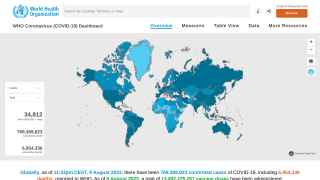Solving the Ultra-Rare Blood Clot Mystery Linked to Adenovirus-Based COVID-19 Vaccines

An international team of scientists believes they may have found a molecular mechanism behind the extremely rare blood clots recently linked to adenovirus COVID-19 vaccines.
Scientists led by a team from Arizona State University, Cardiff University, and others investigated vaccine-induced immune thrombotic thrombocytopenia (VITT), also known as thrombosis with thrombocytopenia syndrome (TTS).
This study published in the journal Science Advances demonstrates that all three adenoviruses deployed as vaccination vectors versus SARS-CoV-2 bind to platelet factor 4 (PF4), a protein implicated in the pathogenesis of HIT.
The researchers determined the structure of the ChAdOx1 viral vector and used it in state-of-the-art computational simulations to demonstrate an electrostatic interaction mechanism with PF4, which was confirmed experimentally by surface plasmon resonance.
These data confirm that PF4 can form stable complexes with clinically relevant adenoviruses.
This finding suggests the viral vector – in this case, an adenovirus used to shuttle the coronavirus’ genetic material into cells and the way it binds to PF4 once injected could be the potential mechanism.
“The mechanism which results in this condition, termed vaccine-induced immune thrombotic thrombocytopenia (VITT), was unknown,” said Abhishek Singharoy, an Arizona State University scientist and corresponding author of the study, in a press release issued on December 1, 2021.
Together, they worked to solve the structural biology of the vaccine and see the molecular details that may be at play.
In sporadic cases, the scientists suggest, the viral vector may enter the bloodstream and bind to PF4, where the immune system then views this complex as foreign.
They believe this misplaced immunity could result in the release of antibodies against PF4, which bind to and activate platelets, causing them to cluster together and triggering blood clots in a minimal number of people after the vaccine is administered.
In particular, the team outlined the details for the structure and receptor of ChAdOx1, which is adapted from chimpanzee adenovirus Y25 – and how it interacts with PF4.
They believe this specific interaction – and how it is then presented to the immune system – could prompt the body’s defenses to view it as foreign and release antibodies against this self-protein.
“It’s really critical to fully investigate the vector-host interactions of the vaccine at a mechanistic level,” added Singharoy.
“This will assist in understanding both how the vaccine generates immunity and how it may lead to any rare adverse events, such as VITT.”
Professor Alan Parker, an expert in the use of adenoviruses for medical applications from Cardiff University’s School of Medicine, said: “VITT only happens in extremely rare cases because a chain of complex events needs to take place to trigger this ultra-rare side effect.”
“Our data confirms PF4 can bind to adenoviruses, an important step in unraveling the mechanism underlying VITT. Establishing a mechanism could help to prevent and treat this disorder.”
“We hope our findings can be used to better understand the rare side effects of these new vaccines – and potentially to design new and improved vaccines to turn the tide on this global pandemic.”
The AstraZeneca and Johnson & Johnson vaccines use an adenovirus to carry spike proteins from the coronavirus into people to trigger a protective immune response.
Another important clue was that neither the Moderna nor Pfizer vaccines, made from an entirely different technology called mRNA vaccines, showed this effect.
The research team also used the computational models of Singharoy to show that one of the ways the two molecules tightly bind is via electrostatic interactions.
The group showed that ChAdOx1 is mostly electronegative. This makes the protein act like the negative end of a battery terminal and could attract other positively charged molecules to its surface.
The first author of the study Dr. Alexander Baker, added, “We found that ChAdOx1 has a strong negative charge.”
“This means the viral vector can act as a magnet and attract proteins with the opposite, positive charge, like PF4.”
“We then found that PF4 is just the right size and shape that when it gets close to ChAdOx1, it could bind in between the negatively charged parts of ChAdOx1’s surface, called hexons.”
The research team is hopeful that armed with a better understanding of what may be causing rare VITT, they can provide further insights into how vaccines and other therapies rely on the same technology.
“With a better understanding of the mechanism by which PF4 and adenoviruses interact, there is an opportunity to engineer the shell of the vaccine, the capsid, to prevent this interaction with PF4.”
“Modifying ChAdOx1 to reduce the negative charge may reduce the chance of causing thrombosis with thrombocytopenia syndrome,” said Baker.
These researchers did not disclose industry conflicts of interest.
PrecisionVaccinations publishes fact-checked research-based vaccine news.
Our Trust Standards: Medical Advisory Committee
























